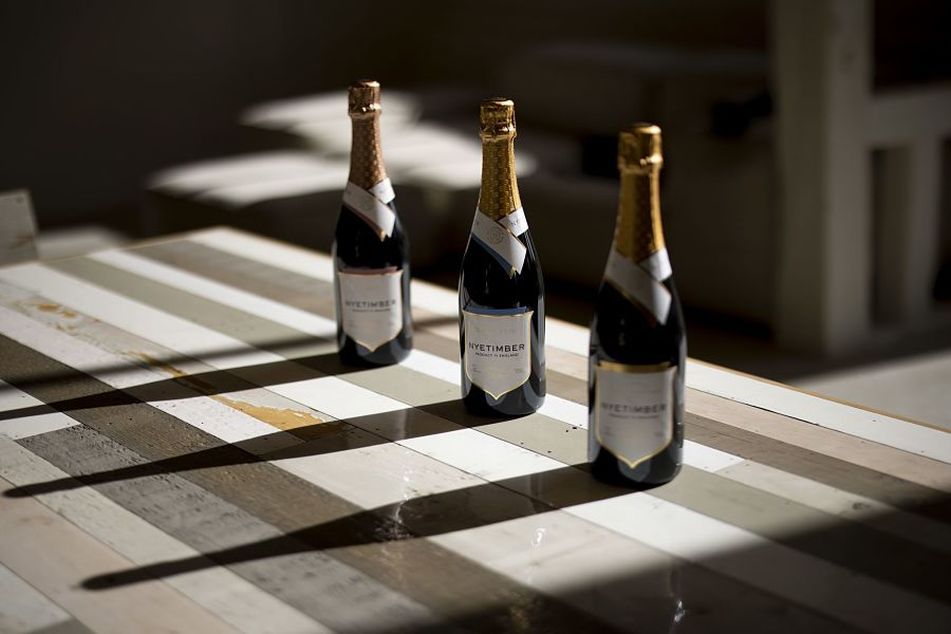Fine wine: The unconventionally attractive alt investment
 g
g
Why not invest in some Château Lafite Rothschild? You can let the value appreciate over time, or if worse comes to worst, you can drink it.
Look around. Chances are you’re surrounded by several alternative investment opportunities, and you don’t even realize it. The painting from the local art gallery hanging over your couch, the top-shelf whiskey from Scotland on your bar cart or the 1966 Ford Mustang in your driveway could all be sold for a profit.
The alternative investment marketplace is booming, so why not invest in something you’re passionate about? It’s safe to assume that few people are enthusiastic about investing in Apple, Tesla or even the latest meme coin. On the flip side, countless people across the globe love to drink, discuss, admire and collect fine wine. So why not invest in some Château Lafite Rothschild? You can let the value appreciate over time, or if worse comes to worst, you can drink it.
Investing in wine might seem intimidating as traditionally fine wine investing has been an activity reserved for the ultra-wealthy and celebrities like Angelina Jolie or LeBron James. However, as interest in alternative investments continues to grow at a rapid pace, technology is breaking down barriers and providing everyday investors with knowledge and access to the collectibles market.
Wine investing is quickly shedding its reputation as an exclusive hobby for the wealthy. Today, there are wine investing platforms, wine stock exchanges, wine-specific investment funds and professional storage solutions to store your bottles as they age, and plenty of other ways to easily buy, sell and store your fine wine portfolio.
WHY SHOULD YOU INVEST IN FINE WINE?
In short, the quality of wine typically appreciates over time and ultimately, so does its value. When investing in wine, the objective is to buy high-end bottles and store them properly to sell at a higher price down the road.
Like the more common alternatives mentioned above, fine wine allows investors to diversify their portfolio and has a low correlation to the stock market. The fine wine market has outperformed most global equities, and it has delivered 13.6% annualized returns over the past 15 years.
Fine wine doesn’t just outperform traditional assets. It also has a proven history of earning higher returns than many alternative asset classes. Data released in 2018 by Credit Suisse Global Investment Returns Yearbook indicate that over the past 118 years, an investment in fine wine had an average annual return of 3.7% – outperforming real estate’s returns of 0.3%, and even gold’s returns of 0.7%. In another data set from 2020, The Knight Frank Luxury Investment Index – an index that measures various investment-grade assets – showed five of its nine asset classes had a negative return on investment. Not fine wine, though, which returned 13% for the year, the second-best performance, putting it right behind Hermès handbags.
As an asset class, wine is less volatile than gold and similar commodities. How could that be? Because the longer you hold onto a wine, the less volatile it becomes. The minimal volatility in a wine investment occurs at the beginning due to the higher supply of the wine at the time of purchase. As time goes on, people are buying, selling and consuming the wine. By the time you’re ready to sell your investment in that 2021 Château Lafite Rothschild, the supply will have been severely diminished, driving up the demand and your profit. Wine is also uniquely guarded against risk because it chemically changes over time. The fact that a bottle of Château Cheval Blanc is going to taste different when it’s 10 years old versus when it’s 20 years old almost guarantees a return on this investment.
Fine wine is a low-risk alternative investment that’s also an excellent hedge against inflation. These days, we’re no strangers to unprecedented circumstances and economic downturn. When the pandemic hit in March 2020, the S&P 500 fell over 20% in the first quarter alone. During that same time, the Liv-ex 100, an index for fine wine, only dipped roughly 4%. While it’s important to invest in a variety of assets, wine investing is one way to help manage portfolio risk.
Alternative investments are on the rise. People are moving away from stocks and bonds and looking into innovative investment opportunities with a low correlation to the stock market to diversify their portfolios. Knowing this, and returns potential, perhaps it would be appropriate to call fine wine what it really is: the Alt of Alts.
[More: Balancing your portfolio with fine wine]
Anthony Zhang is co-founder and CEO of Vinovest.
Learn more about reprints and licensing for this article.




